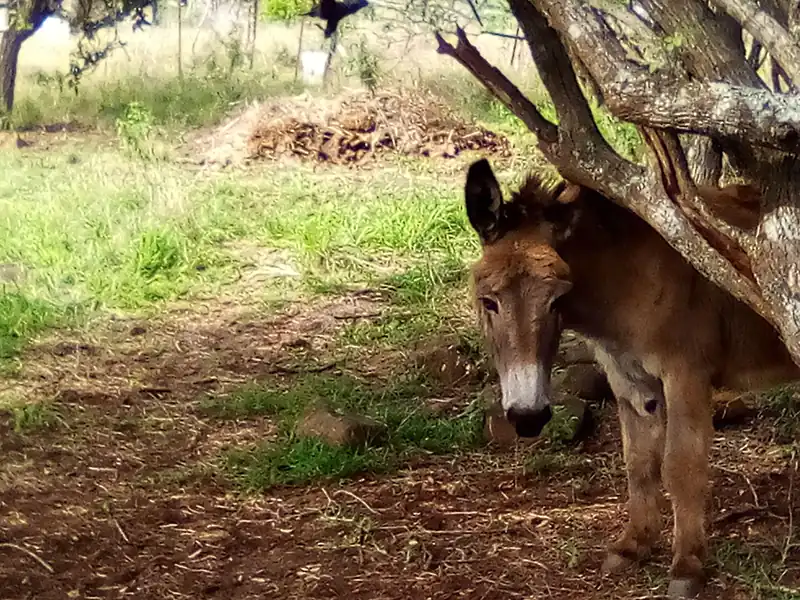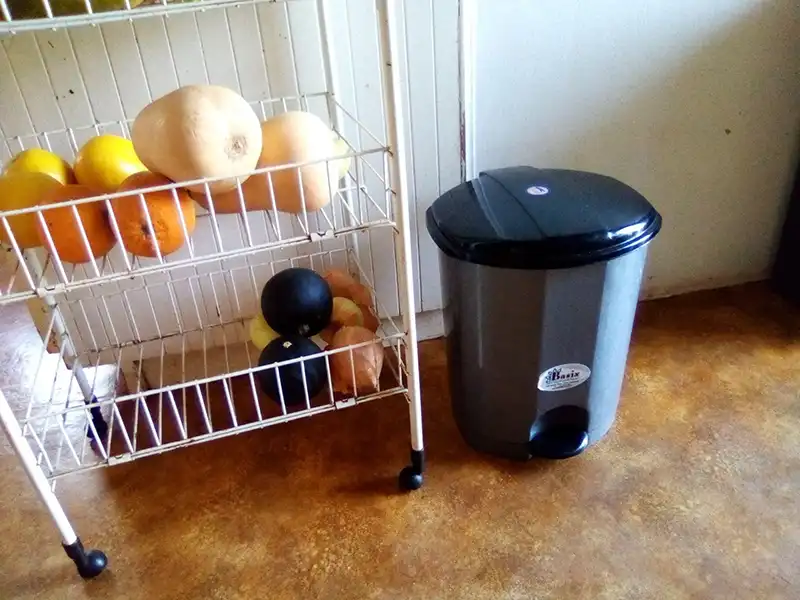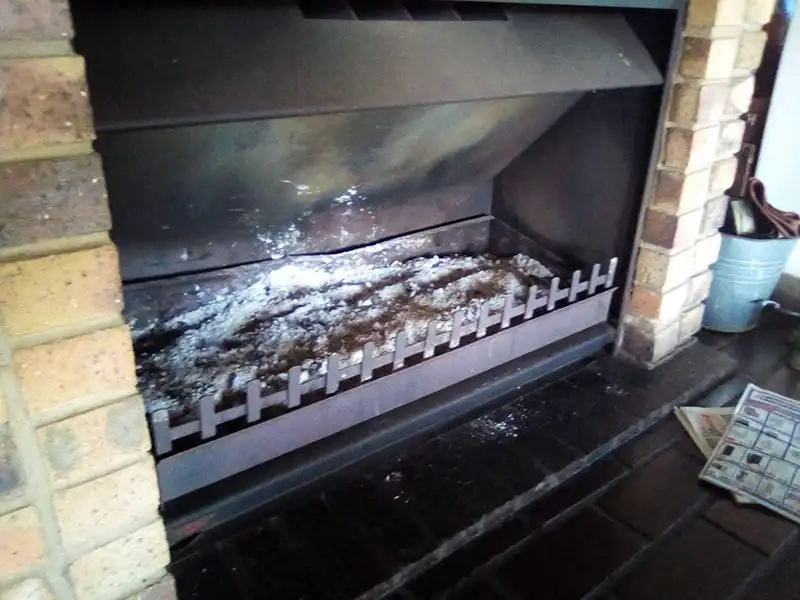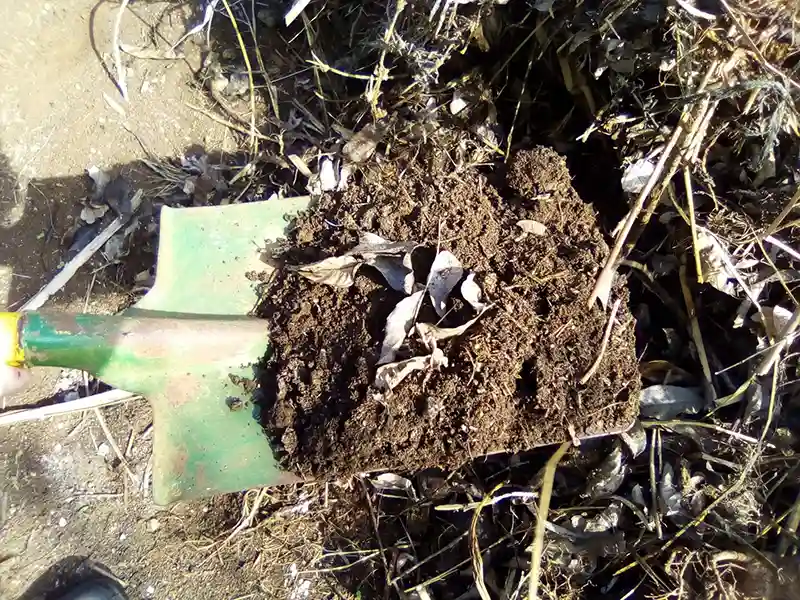How To Make Your Own Compost
If you read my article about making tap water safe for bonsais, you may remember I said that vinegar has a magical effect against stains caused by limescale – well, the effect of HORSE MANURE on compost heaps is almost equally magical. A pile of horse manure, correctly maintained, can reach such high temperatures in the middle that when you take the compost out, it can have a charred appearance: the heat inside actually reduces your compost to ash.
Any organic material you want to get rid of – from spoiled food to lawn clippings to nasty thorny branches to the monkey the dogs killed and brought home (true story!) – chuck it into your (horse-manure-based) compost heap, and it is magically transformed into nutritious plant food.
Obviously, in order to make this kind of compost heap, you need plenty of space. In fact, seeing how much horse manure you also need, you probably need ‘plenty of space,’ as in, ‘a farm.’ Moreover, if you are not fortunate enough to live on a farm, chances are that you will not be free to make your compost the way you like.
It is nobody’s actual business what you choose to put in your compost, but if you have nosy neighbors spying over your hedge when you throw out your compost, and if those nosy neighbors have connections with some local health-and-safety regulators, you might find yourself in hot water if you still have any dead monkeys left when they arrive at your house.
Location, Location, Location
Compost heaps (especially magical horse manure compost heaps) can get quite large, so the first thing you need is quite a big space. Depending on what you put in it, and how fast you use it up, your compost heap might take up something like four square meters. If you don’t need that much compost or if you don’t have that much space, that is also fine: even urban gardeners can achieve reasonably good compost results using something like a shallow pit, or even a special (plastic) compost container, to put their compost in.
If you have a choice, it’s quite nice to put your compost heap under a tree. Not only will the trunk of the tree help hold the compost heap upright, but the shade from the tree will prevent the compost from losing as much moisture from evaporation. In addition, you will find the shade very welcome when you are slaving away shoveling compost into your wheelbarrow for distribution to different areas of your garden. But you also need to be practical.
For example, if you foresee that most of your compost is going to be coming out of your stables, and if your stables are far away from the nearest tree, you might find that a shorter distance to cart away the compost wins out over a shady location. (We have a massive termite problem here, so I didn’t even consider putting my compost heap against a tree: the termites would have built their nasty red mounds against the trunk of the tree, and killed it in next to no time.)

It’s also a good idea to situate your compost within reach of a garden tap. In rainy weather, your compost will probably stay quite moist enough without any help – but in the dry season, the fermenting process will probably grind to a halt unless you give your heap a good sprinkling every now and then (maybe every couple of weeks, or more often, depending on your weather, and how much of a rush you’re in for your compost to be ready).
Materials
Ok, so, as I said, your number one go-to compost ingredient is HORSE MANURE. However, if you have no horse manure handy, do not despair! The good news is that any organic material can be composted. So in your kitchen, you need a compost bin – preferably the sort that is quite small and squat, and has a foot pedal. The foot pedal is nifty when you are using both hands to scrape peels off your chopping board into the bin, and the small size forces you to tip the compost out before it starts smelling too bad.

Into this bin, you tip any organic waste from your kitchen. In addition to your potato peels, you also put your butternut/onion/tomato/banana peels, the core of your apple when you are finished eating it, the breadcrumbs you tipped out of your toaster – even your used serviettes after the family eats take-aways.
If you have a large compost heap, it’s a good idea either to scoop out a hole in the existing compost, and tip your kitchen waste into there, or otherwise you can cover the kitchen waste with another kind of compost, to minimize the odor and prevent flies from congregating.
But kitchen waste tends to be quite soft and moist. Depending on your weather conditions, that might not be a bad thing for your compost – but it is also quite a good idea to add some harder and drier material like branches or clippings to your compost heap, to space the other materials out, and allow a bit of air to circulate through your compost.
Also, unless you know exactly what nutrients your plants need, and exactly which ingredients, once nice and decayed, contain those nutrients, it’s a good idea to put a bit of everything you can think of in the compost – including hard, woody stems. Think of it as a ‘balanced diet’ for your plants.
Scrap paper and cardboard (e.g. cereal boxes, toilet rolls, newspaper etc.) make excellent compost. However, light materials like paper would be likely to fly away in the breeze, so when you add them, either add something else heavier on top of them (can anybody say HORSE MANURE? – ok, ok, branches etc. also work fine), or bury them a little in the existing compost.

In addition to having easy access to magical horse manure, those who live on farms will probably also be able to access wood ash, which is an excellent compost ingredient. Whether you have a wood-burning boiler to heat your water, or you regularly build bonfires to dispose of garden refuse, or even if you’re fortunate enough to have a wood-burning fireplace in your home, if you live on a farm, you are once again in a fortunate position when it comes to compost.

Wood ash contains plenty of lime and potassium, both of which are beneficial to gardens. Ash from hardwood trees, including maple and oak, has a higher mineral content than ash from softwood trees (including conifers like pines or firs). But if you put ash directly onto plants, it may burn them, as ash contains lye, as well as some salts.
A small amount of ash, such as might accidentally blow into your garden from a nearby bonfire or barbecue, wouldn’t do any harm – but if you heaped the ash directly onto a plant, that would probably not be a good idea. However, if you have a compost heap (especially a magical horse manure compost heap), you can safely add the ash into the compost, allow it to decompose along with everything else, and then put it on your plants. The harmful compounds should soak away into the soil, leaving only the valuable nutrients in the compost.
Using Your Compost
If you’re very organized, and if you have the right proportion of compost materials input vs mature compost removal, you can select half the compost heap to rest and mature, while only adding new compost materials to the other half. Then when you need to use any compost, you can just take it as is from the resting side.
After it has rested for long enough, your compost should have reached a consistency similar to soft soil: crumbly but damp, and almost black in color. (Hint: when you have dead monkeys etc. in your compost, make sure you know which part of the compost heap those things are in: that area will need to ‘rest’ for longer than most of the other compost, to ensure it is fully decomposed before you put it on your plants.)

If you are less organized, or if you do not have the right proportions of compost input and output to have a resting side and an active side, you’ll need to dig out spadefuls of mature compost from underneath the top few layers, which will not be ready yet.
Lift up or scrape away the undecayed materials on the surface of the heap; move this material aside, out of the way; and then you can get some good spadefuls of the crumbly and black compost from the underneath and central portions of the heap.

If, despite your precautions when removing some mature compost from your heap, you find you have large grubs or worms, or undecayed bits of fruit, vegetables, or bits of stick, that would not be ideal for putting into a small, indoor plant pot. You would need to pick out those large items by hand, and return them to your heap for further decomposing. But if, for example, you are preparing a large area for planting vegetables, you could probably get away with leaving those larger items in, if you couldn’t be bothered to pick them out.
In addition to adding compost to soil before planting, it is a good idea to keep adding compost at regular intervals to your established garden or pot plants. Obviously, if you are not fortunate to have plenty of space and/or HORSE MANURE, you might have to ration the amount of compost you spread on your garden or add to your containers – but if you have it, you might as well use it. Although different types of plant have different nutrition needs, almost all growing things enjoy compost, and quite a lot of it.
Usually you can see clearly and immediately how happy your plants are to get compost. They grow more vigorously, and their leaves take on a nice intense shade of whatever color they normally are. Rosemary is pretty much the only thing I’ve come across that doesn’t appreciate compost.
After I put a layer of compost on the herb garden, the rosemary started looking sickly and stopped growing strongly – so I replanted it in a container with quite poor soil, in the full sun, and it is flourishing. If in doubt, try adding compost and see what happens. If that is not a success, you can always scrape the compost off again, add more dry soil, or repot your plant without using compost this time.
Compost Heap Troubleshooting
Odor
The first thing about your compost heap that might be problematic – especially in an urban environment – would be a bad odor. This is not only undesirable in itself: it would also attract flies (or other scavenging creatures), and make your whole compost process very unenjoyable. Bad odors would normally be an indication that your compost is too moist and soft, and are especially common when your compost has a lot of food waste in it.
Things like fruit and vegetable peels/cores are quite soft, quite sugary, and decay quite rapidly, and might easily produce a bad smell – which would attract flies. The same applies – even more so – to anything with meat. When meat goes off, it smells bad. If you have a small compost heap, try combatting the odor problem by adding more bulky and dry material. Adding something like clippings from woody shrubs, or fallen twigs, will help space out the softer material and promote airflow. This should decrease the odor problem.
Alternatively, you could make no attempt to decrease the odor, but rather add a layer of something neutral on top to keep the odor in, and prevent it from reaching your nostrils. Obviously, if you have HORSE MANURE, putting that on top of your kitchen waste is ideal.
Horse droppings have quite a pungent smell when they are fresh – strong, but not unpleasant, seeing that horses eat only grass, and therefore have no decomposing meat in their excrement. When the droppings are more than a day or two old, the odor is virtually nil. And a layer of horse manure over your compost heap completely prevents any other odors from leaking out.
If you do not have any horse manure handy, you can also use the (dead) weeds you removed from your garden to cover over your food waste – except obviously don’t use anything with seeds that could germinate in your compost.
Dry grass is fine – but not lawn clippings, which are soft and juicy, and would contribute to the problem. Fireplace ash works even better, and even paper or cardboard would also work – except ash and paper would probably need to be dampened to prevent them blowing away.
Ants
Having read my article about how to deal with PESTS on your bonsai, you will remember my saying that pests tend to pick on plants that are already a bit sickly – and that your first step towards controlling pests should be to get your plants growing as vigorously as possible. Well, much the same thing applies to compost heaps: if you find you have a lot of ants, your composting process is probably not going too well.
The most obvious problem would be that the compost was too dry – that could increase the chance of an ant infestation because ants normally like nesting in dry, sandy conditions. In that case, you could try watering your compost heap a bit with a hosepipe or adding more moist compost and less dry compost for a bit – or both.
The other thing that I’ve found very effective against ants is mint: they hate it! The type of mint I have here grows like a weed, and is very easy to propagate: you just break off any piece of the stem, stick it in the ground, and it sprouts roots and grows almost at once. Try and remember to water it the first few days, but even if you don’t, it will probably still grow.
(In fact, if you are trimming your existing plants, and you happen to drop a small piece of discarded mint onto the lawn, chances are you will soon have mint popping up through the grass, even if you give it no encouragement whatsoever.) You could plant mint in/around your compost heap, or just discard plenty of bits of mint along with your compost, and that would probably help with your ant problem.
Worms/grubs
There is actually no reason for this to be in the ‘troubleshooting’ section because having worms or grubs in your compost is a sign that everything is going well. Worms and grubs help break down all the organic materials you might add to your compost, and if some of them get into your garden when you put the compost there, they will continue to do their excellent job in situ (wait for my upcoming article about worm farms).
The only problem would be if you had a very large grub or worm, you probably wouldn’t want to add that into a small potted plant. In that case, when you were adding your compost to your pot, you could just chuck the worm on the floor, if you were lazy – or take it back to the compost heap, to continue helping to decompose your compost materials.
Mysterious vanishing compost heaps
This is not a joke: if you happen to not check on your compost heap for a while, it is possible that when you go back, the whole thing could have disappeared. You’d scratch your head, and wrack your brains to try and remember when you could have used so much compost, and forgotten about it – but sometimes, if the conditions are just right, your compost heap really does vanish.
This could happen if, for example, your compost heap is very hot and dry in the middle, and then it rains; or if all the compost-eating insects and microorganisms were dormant, and then the weather suddenly got much warmer. Under these conditions, the composting process could work so rapidly that your compost heap completely decomposes and disappears into the soil. It is quite alarming, but it happens.
Final Thoughts
Compost is a vital weapon in the armory of every bonsai grower. Like I said, adding compost to any plant almost always makes it healthier and stronger – and it’s so easy to make, it never ceases to amaze me that some people would actually go out and buy compost.
Compost is literally rotten old stuff that you have discarded, but what is rubbish to you is food to your plants. Using your waste to feed your plants is not only cheaper than buying plant food, it also contributes to a sustainable way of living, eating, and gardening.







